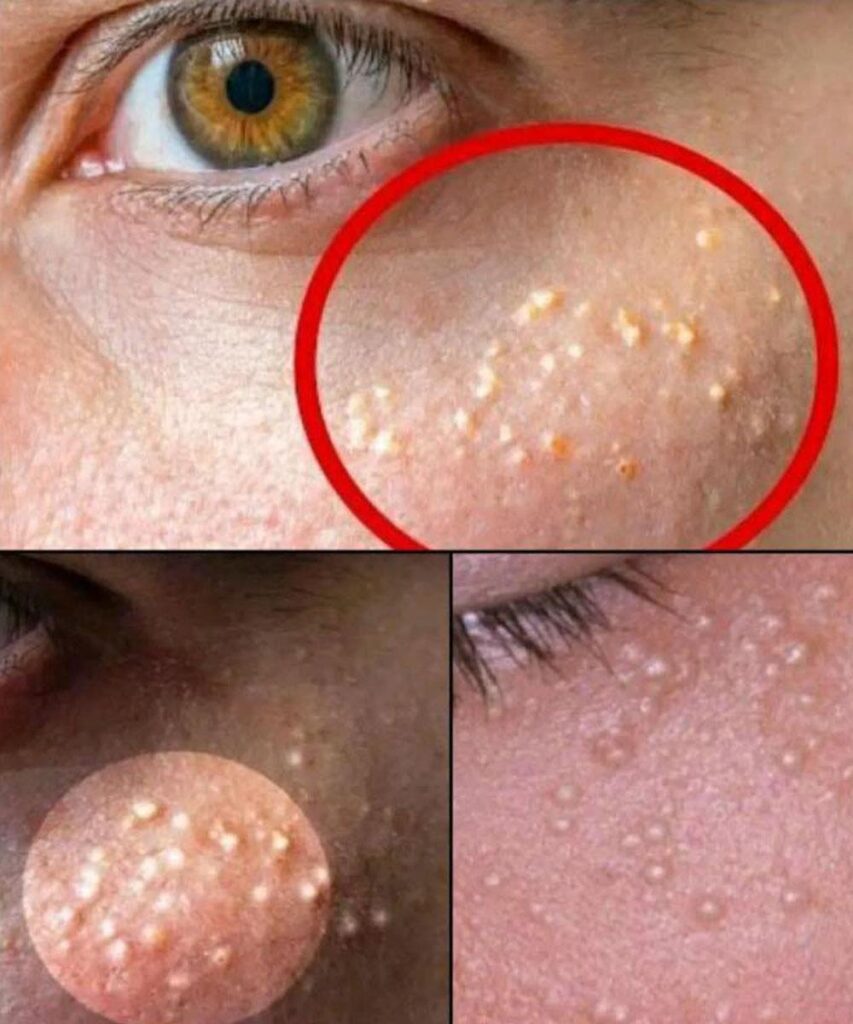
Have you ever looked in the mirror and noticed tiny white bumps clustered around your eyes, cheeks, or forehead?
They might look like little whiteheads, but they don’t pop like acne. They sit just under the surface—smooth, firm, and stubbornly unmoved no matter what cream or cleanser you use.
These small cysts are called milia (pronounced mill-ee-uh), and while they’re common—and harmless—they can be frustrating to live with, especially as we age and our skin becomes more sensitive.
The good news? You don’t always need a dermatologist to treat milia. With the right care and natural methods, it’s often possible to reduce their appearance safely from home.
Let’s take a closer look at what causes these bumps, why they tend to appear more often with age, and what you can do to manage them gently and effectively.
What Exactly Is Milia?
Milia are small, white bumps that form when keratin—a protein found in skin, hair, and nails—gets trapped beneath the surface of the skin.
Instead of shedding dead skin cells naturally, your skin traps them in tiny pockets. Over time, these harden into firm little cysts just beneath the surface.
These bumps aren’t painful or dangerous, and they’re not acne. But they can make the skin appear rough or uneven, and for many people, they’re a cosmetic concern—especially when they show up on the face.
Common Causes of Milia
Milia can affect people of all ages, but older adults may be more prone to them due to slower cell turnover and long-term skin damage. Here’s what might cause or worsen these tiny cysts:
Dead skin cells that fail to shed properly
Sun damage — long-term exposure can thicken the skin and increase buildup
Skin trauma or injury (e.g., burns, abrasions, or rashes)
Use of heavy or oil-based creams, especially around the eyes
Long-term use of steroid creams
A side effect of certain autoimmune or genetic conditions
It’s also worth noting that milia can appear in adults even without obvious cause. Sometimes, it simply reflects how the skin is aging and regenerating over time.
Where Do Milia Show Up?
Milia can appear anywhere on the body, but they are most commonly found on:
Under the eyes
Upper cheeks
Forehead and temples
Nose
Chin
Chest or upper torso
Arms and legs
Occasionally, in the mouth or on intimate areas
For older adults, milia around the eyes and cheeks are especially common, as the skin in those areas is thinner and more delicate.
Should You Be Concerned?
In most cases, milia are completely harmless. They don’t itch. They don’t hurt. And they’re not contagious.
However, they can be mistaken for other skin issues, so if you’re unsure whether the bumps are milia, have them evaluated by a healthcare provider—especially if they change in size, color, or become inflamed.
What Not to Do: Please Don’t Squeeze!
Please Head On keep on Reading (>)
